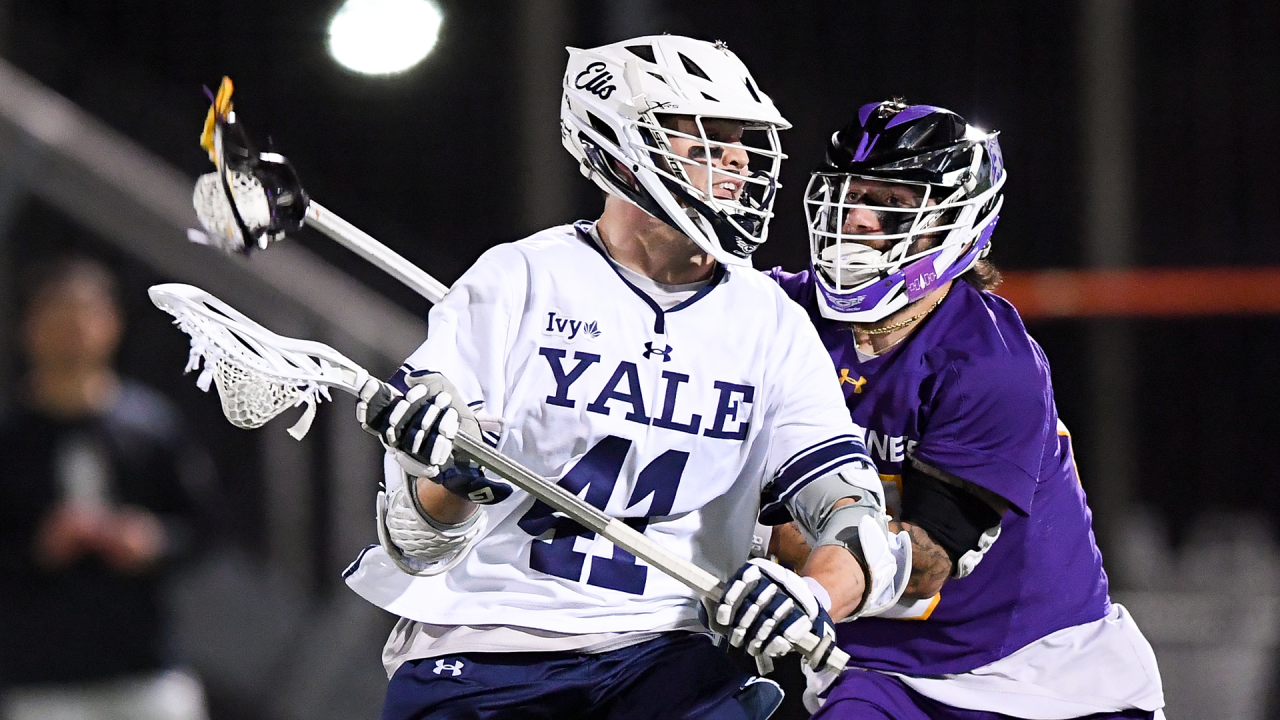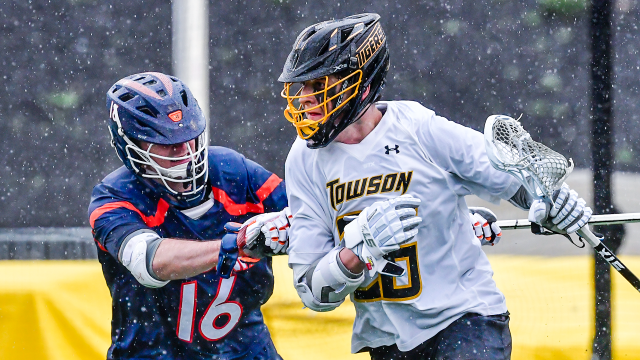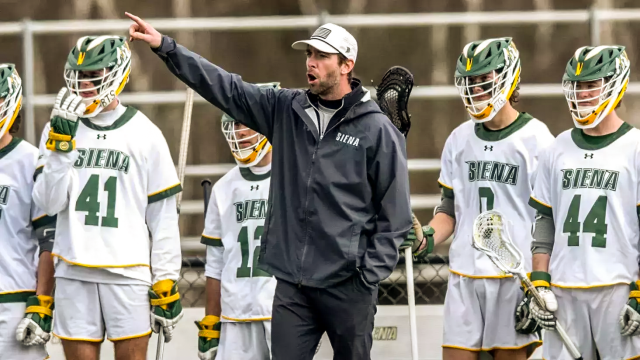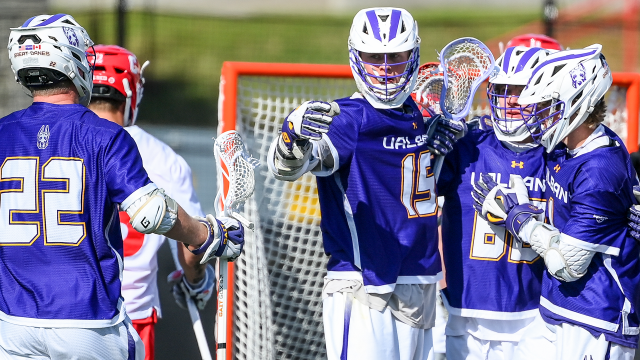
Tewaaraton Stock Watch: Good Luck Picking 5 Finalists
It might be quite the task for the Tewaaraton Award committee to winnow its list of 25 semifinalists down to five next month.
There are four finalists from a year ago still in the college game, and three of them rank in the top 10 nationally in points per game (Cornell’s CJ Kirst, Virginia’s Connor Shellenberger and Notre Dame’s Pat Kavanagh). The outlier of that group, Duke’s Brennan O’Neill, was last season’s recipient and is 17th in points per game at 4.57.
There’s also the national leader in points per game (Yale’s Matt Brandau), plus the current No. 2 (Harvard’s Sam King) and No. 3 (Penn State’s TJ Malone) in that category. And it doesn’t even include Joey Spallina, the face of Syracuse’s re-emergence as a threat to play on the season’s final day.
(How loaded is the semifinalists list? Virginia attackman Payton Cormier, who leads the country in goals per game, didn’t make the cut.)
It’s also worth remembering a couple historical details. Of the Tewaaraton’s 23 all-time winners, 11 played for national champions, 17 were on teams that reached at least the NCAA semifinals and all of them played on an NCAA quarterfinalist. Winning in May, at least a little, matters.
And of the 110 Tewaaraton finalists, just eight played on teams that missed the NCAA tournament. Winning in the regular season matters, too.
With that in mind, here is a top six heading into the final five weeks of the season, listed in alphabetical order. There isn’t a clear front-runner at this point, and depending on what criteria is prioritized, they can be ordered in pretty much any way.
But chances are, this year’s winner emerges from this group.
Matt Brandau, A, Yale (41 G, 53 A in 13 games)
Every week brings another silly stat line or two for Brandau, who is averaging 7.23 points per game. As a comparison, the only two players in the last 30 years to surpass seven points a game were Penn State’s Grant Ament in 2019 and Albany’s Lyle Thompson in 2014.
Raw numbers don’t guarantee anything — Ament didn’t win despite carving up defenses on his way to a 30-goal, 96-assist season — and defense isn’t exactly a core strength for much of the Ivy League this season. But Brandau’s production as the clear central figure on Yale’s attack after season-ending injuries to Leo Johnson and Chris Lyons is impressive.
CJ Kirst, A, Cornell (41 G, 18 A in 12 games)
The Big Red star has impressed in victories over Yale (four goals and four assists) and Syracuse (five goals and one assist). And he has stood out in losses to Penn (four goals) and Notre Dame (five goals and three assists).
He’s not the only player on Cornell’s offense enjoying a stellar season; Michael Long has 26 goals and 34 assists to edge Kirst out by a point entering Saturday’s regular-season finale. Nonetheless, there aren’t many players people around the sport you would want to have the ball in the final minute of a tight game than Kirst, and he has a decent chance to become a two-time Tewaaraton finalist.
Pat Kavanagh, A, Notre Dame (17 G, 32 A in 10 games)
It’s been a good April for the fifth-year player, who has a combined eight goals and nine assists in victories over Duke, Cornell and North Carolina. And it’s helped Notre Dame solidify its claim to the No. 1 seed in next month’s NCAA tournament. There’s still a little more work to do, but it easily owns the best profile.
The Fighting Irish’s abbreviated regular-season schedule (it plays 11 games before its conference tournament, while Penn State had 12, Cornell will play 13, Virginia and Yale will get to 14 and Duke and Syracuse will play 15) makes a comparison of raw numbers hard at this point.
It isn’t unprecedented for a No. 1 seed to not have a Tewaaraton finalist; neither 2002 Johns Hopkins nor 2016 Maryland did. But given Kavanagh’s profile and his impact on winning, it’s hard to believe he’ll be left off the finalist list of Notre Dame finishes strong.
TJ Malone, A, Penn State (32 G, 29 A in 11 games)
The fifth-year senior keeps churning out fine games, reliably handling massive attention from physical Big Ten defenses and still playing as efficiently as last year. (He’s shooting 36.4 percent compared to 37.1 percent last year; if he had one more goal somewhere along the way, the percentage would be better than his 2023 work.)
Malone’s consistency extends even to the Nittany Lions’ three losses. He has seven goals and eight assists in those games, with a .368 shooting percentage. He’s a remarkably consistent player, and it will be curious to see if he’s rewarded for it.
Brennan O’Neill, A, Duke (42 G, 22 A in 14 games)
O’Neill has always been content to help spread the wealth in the Blue Devils’ offense, and while he’s had some fine games — his four-goal, one-assist effort against Virginia on April 14 — he hasn’t authored a stat line of more than five points since February.
Will that matter to the Tewaaraton committee as it evaluates last year’s champion? It’s a good question. One thing that should be cleared up, though, is he has not lacked assertiveness in Duke’s losses. He has four goals and an assist on 31 shots in those three games; the real story is the Penn, Syracuse and Notre Dame defenses did an excellent job of limiting the quality of his looks.
Connor Shellenberger, A, Virginia (25 G, 41 A in 13 games)
The fifth-year senior surpassed the 300-point plateau for his career in Saturday’s 18-17 loss at Syracuse, mauling the Orange defense for four goals and five assists. It was his most efficient shooting day of the season; he needed just six shots.
Shellenberger’s history suggests he’ll heat up with the weather; in nine career games in May, he has 29 goals and 25 assists. Already a two-time Tewaaraton finalist, he’s certain to be a strong part of the discussion in determining the five finalists.
Patrick Stevens
Patrick Stevens has covered college sports for 25 years. His work also appears in The Washington Post, Blue Ribbon College Basketball Yearbook and other outlets. He's provided coverage of Division I men's lacrosse to USA Lacrosse Magazine since 2010.

Categories
Tags
Related Articles




